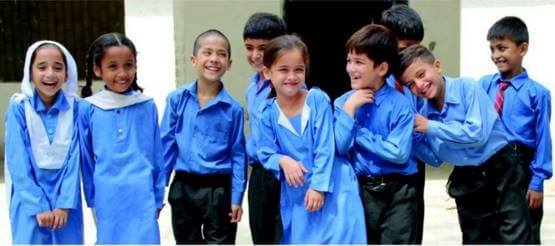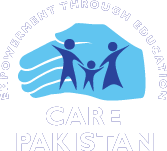As a teacher I understand the importance of education, and its transformative power. Yet there are times I have almost taken it, and my own opportunities, for granted.
An oft-quoted piece of proverbial wisdom states: “Give a man a fish, and you feed him for a day; Teach a man to fish, and you feed him for a lifetime”. It is an apt summing up of CARE’s philosophy, one where students from impoverished backgrounds and families where education is the exception rather than the norm, are nurtured into individuals who can compete on a global platform.
It is an astounding success in a country where 21% of school age children do not receive an education, one with the third highest number of illiterate adults in the world. In 2011 the funding for education in Pakistan was cut from 2.5% to 1.5% of the GDP, less than the annual subsidy provided to the national airline.
So how did CARE originate? How did a small, local initiative for change become a larger force for countering this extreme apathy? It is a moving story of bold determination fuelled by compassion that hooked me as I listened to Fatima Jamila Anwar, (Former Head of Development, CARE) in the UK.
CARE was set up in 1988 by founder Seema Aziz in response to flooding around her textiles factory. When she visited the local area, small barefoot children with seemingly nowhere to go, followed her around. Realising that education could be the ultimate answer she countered all opposition and personally raised money, to open the first school. Thus, CARE Pakistan was born.
Ms Aziz initially set up 10 CARE schools in existing government school buildings that stood empty. They were soon outperforming local schools and Ms Aziz was approached by the Punjab government asking her to take on more of their failing schools. Since then CARE has established over 500 schools in all four provinces of Pakistan, 34 of which have been built by CARE itself. It currently educates over 200,000 children including a number who are being supported through intermediate and degree level. There are to date, 90,000 CARE graduates and 700 Higher Education students on a CARE scholarship, students who often remain with CARE from 4-7 years.
What has made CARE work so well despite the fact that it has broken some traditional conventions such as sex segregation in the classroom? Perhaps it is partly this holistic approach of nurturing a student’s growth. It could also be CARE’s unique low cost model where it utilises existing “ghost schools”, the government schools that stand empty and abandoned due to lack of funding, reluctance and disillusionment. Under CARE, these once empty echoing corridors become places where children can begin to transform their lives, in a climate of positivity and learning.
Why build new schools when existing ones can be “recycled”? It means more funds can be diverted to each child than would be the case were CARE to build its own schools. It means that one child can be educated for less than the price of a Starbucks coffee.
CARE’s initial rigorous standards have been followed ever since its inception. It runs a teacher training centre in Lahore, as well as a number of in-house training centres in rural schools. Consistent monitoring ensures standards of quality are met. But CARE is about more than just formal education – it is about flourishing.
CARE provides its students with ongoing mentorship, career counselling and confidence skills, often in collaboration with student interns, some internationally selected. Its impressive graduate profiles are testament to its holistic approach, with graduates entering professions ranging from Medicine to Management. Young people from large families in rural areas have changed their entire outlook on what is possible in life, allowing them to act as agents of progress themselves. When people are educated, lives are changed.
By educating Pakistan’s younger generation, CARE Pakistan will hopefully transform the landscape of tomorrow. It aims to educate 1 million children by 2018, and so far it has overcome all kinds of obstacles to sustain its growth, while maintaining adherence to the highest standards – but it still has a long way to go. I for one, hope fervently for its accelerated growth, and when I read the stories of some of its successes I think with wonder of a flooded rural landscape around a textiles factory with children running around barefoot, with nowhere to go. Perhaps some of those same children are part of a better story, thanks to CARE.
The writer wishes to remain anonymous.




 Care Pakistan Football Tournament 2022 -
Care Pakistan Football Tournament 2022 -